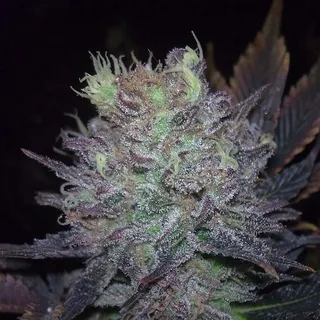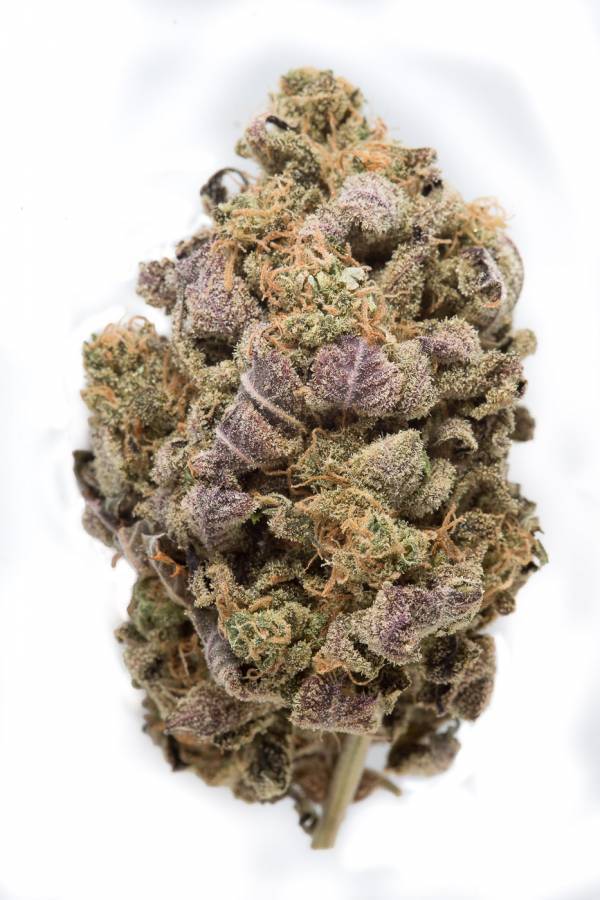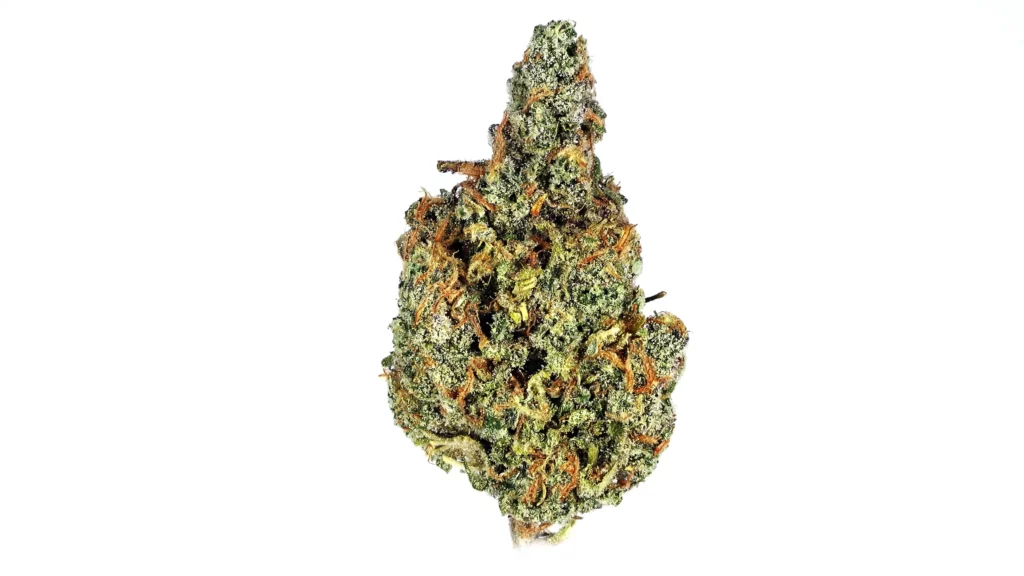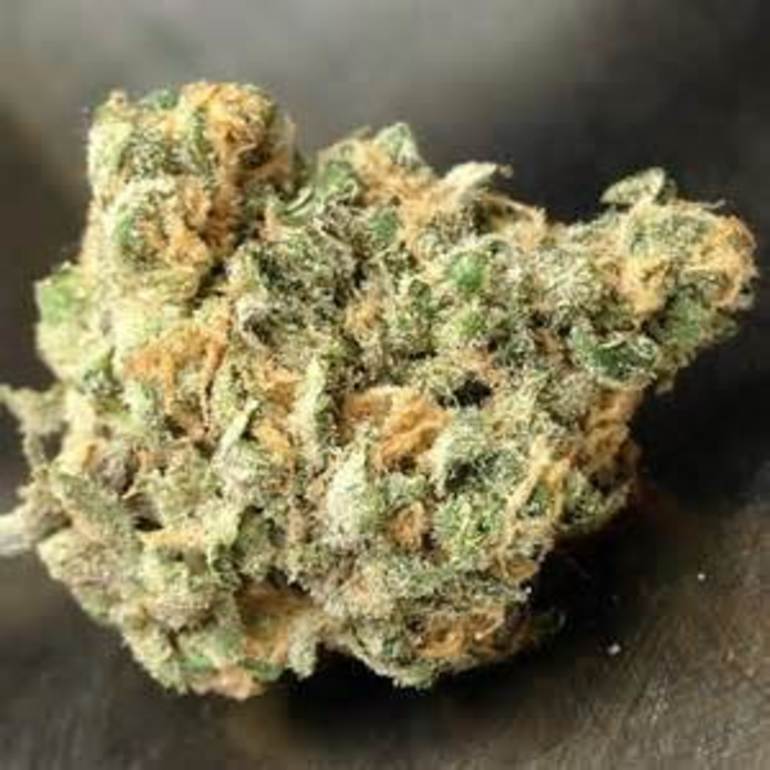History of Blue Widow Weed Strain
Origins and Development
The Blue Widow weed strain has a rich history that dates back to the 1990s when it was first developed by the Dutch seed bank, Dinafem Seeds.
This strain is a cross between two popular varieties: White Widow and Blueberry.
White Widow is an indica-dominant hybrid that originated in the Netherlands in the early 1990s.
It was created by crossing a Brazilian Sativa with an South Indian Indica, resulting in a potent and resilient plant.
The other parent of the Blue Widow, Blueberry, is a sweet and fruity indica-dominant variety developed in the 1970s by Vancouver-based breeder DJ Short.
Blueberry was created by crossing three different indicas: Purple Thai, Emerald Ryder, and Afghan Kush.
When Dinafem Seeds crossed White Widow with Blueberry, they aimed to create a strain that combined the best qualities of both varieties.
The result was Blue Widow, a balanced indica-sativa hybrid that inherited the potency and resilience from its White Widow parent and the sweet, fruity flavors from Blueberry.
Blue Widow quickly gained popularity among cannabis enthusiasts due to its impressive yields, short flowering period, and intense aroma.
This strain is perfect for indoor and outdoor growing methods and can thrive in a variety of climates and environments.
The effects of Blue Widow are often described as relaxing and calming, with a gentle body buzz that helps users unwind after a long day.
It’s also known to have medicinal properties, helping alleviate symptoms of pain, anxiety, and insomnia.
In summary, the history of Blue Widow weed strain is one of careful breeding and selection, combining two powerful varieties to create a unique and highly sought-after cannabis experience.
The Blue Widow weed strain is a hybrid of two popular strains: White Widow and Northern Lights.
The Blue Widow weed strain has a rich history that dates back to the 1990s when it was first bred by crossing two popular strains, White Widow and Northern Lights.
White Widow, a legendary strain from the Netherlands, was created by combining two Brazilian varieties: South American Sativa and Indian Indica.
This union resulted in a potent and flavorful strain with a high THC content, making it highly sought after by cannabis enthusiasts worldwide.
Northern Lights, on the other hand, is an iconic Canadian strain known for its intense indica effects and robust growth characteristics.
By combining these two strains, breeders aimed to create a hybrid that would combine the best qualities of both parents: the potency and flavor of White Widow and the hardiness and medicinal properties of Northern Lights.
The resulting Blue Widow strain is a balanced hybrid with an indica/sativa ratio of 60/40, offering a well-rounded experience for users.
As you might expect from its heritage, Blue Widow has inherited the striking blue undertones on its leaves from White Widow’s Brazilian roots. However, it’s the aroma and flavor that truly set this strain apart: sweet, fruity notes with hints of citrus and earthy undertones, reminiscent of Northern Lights’ signature taste.
In terms of effects, Blue Widow is known to induce a deep relaxation without being overly sedating or couch-locking, making it suitable for both medical patients seeking pain relief and recreational users looking to unwind after a long day.
Medical benefits associated with Blue Widow include chronic pain management, reduced stress and anxiety, and even some anti-inflammatory effects due to its high CBD content – which has been reported to range from 1% to 4%, depending on growing conditions.
The relatively low risk of paranoia or increased heart rate often linked to high-THC strains makes Blue Widow an excellent choice for those who desire a relaxing, calming effect without the potential risks associated with some other cannabis varieties.
Key Characteristics
- Sativa/Indica Ratio: 60/40
- THC Content: High (15-25%)
- CBD Content: Low to moderate (1-4%)
- Aroma and Flavor: Sweet, fruity with hints of citrus and earthy undertones
It’s believed to have originated in the Netherlands, where it was developed by growers looking to create a powerful and versatile strain.
The history of the Blue Widow weed strain dates back to its origins in the Netherlands, where it was cultivated by experienced growers who aimed to create a strain that embodied power and versatility.
Characterized by its distinctive blue coloration, this indica-dominant hybrid is believed to be a cross between two other popular strains: White Widow and Blueberry.
The White Widow strain, which originated in the 1990s in South America, was renowned for its high THC content and robust growth pattern. By crossing it with the Blueberry strain, known for its sweet flavor and calming effects, growers sought to create a strain that combined the best qualities of both parents.
As a result of this crossbreeding, the Blue Widow strain emerged with its unique blue coloration, which is thought to be caused by the high concentration of anthocyanins – potent pigments responsible for the red, purple, and blue colors in plants.
The Blue Widow’s potency is due in part to its high THC content, estimated to range between 15% to 20%. This makes it a favorite among experienced smokers who seek a strong and long-lasting effect.
Its versatility extends beyond its psychoactive properties. The Blue Widow strain is also known for its medical potential, particularly in alleviating symptoms of chronic pain, insomnia, and anxiety disorders.
Key Features
- Potency: High THC content (15% to 20%)
- Coloration: Distinctive blue color due to high anthocyanin concentration
- Growth Pattern: Indica-dominant, robust growth pattern
- EFFECTS: Strong and long-lasting psychoactive effect; potential medical benefits for chronic pain, insomnia, and anxiety disorders
Today, the Blue Widow strain is a sought-after variety among cannabis enthusiasts and patients alike, prized for its potency, versatility, and unique blue coloration.
Cannabinoid Profile and Effects
THC and CBD Content
The Blue Widow weed strain is a popular indica-dominant hybrid that has gained significant attention for its unique cannabinoid profile and impressive effects.
The strain’s THC content is reported to range between 18% and 24%, with some samples testing as high as 25%. The moderate to high THC levels make it an ideal choice for experienced users looking to alleviate pain, anxiety, and stress.
On the other hand, CBD content in Blue Widow is relatively low, typically ranging from 0.5% to 1.5%. However, some growers have reported CBD levels as high as 2%, which can provide a more balanced effect for users seeking relief without psychoactive symptoms.
The cannabinoid profile of Blue Widow is characterized by its high THC-to-CBD ratio, making it a potent and fast-acting strain. The dominant terpenes present in Blue Widow include myrcene, limonene, and caryophyllene, which contribute to its distinct flavor and aroma profiles.
The effects of Blue Widow are often described as intense and long-lasting, with users reporting deep relaxation, sedation, and pain relief. The strain’s indica dominance makes it an excellent choice for evening use or as a sleep aid, helping individuals fall into a restful slumber after a long day.
However, some users may find the THC content of Blue Widow too potent for their tolerance levels, particularly if they’re new to cannabis consumption. As with any strain, it’s essential to approach with caution and start with low doses to assess your body’s response.
In addition to its medicinal properties, Blue Widow is also prized for its unique flavor profile, which combines sweet, earthy notes with hints of citrus and spice. The aroma is equally captivating, with a pungent and slightly herbal scent that’s sure to please even the most discerning palates.
Blue Widow weed strain has a high THC content, typically ranging from 1822%.
The Blue Widow weed strain is a popular cannabis variety known for its high THC content, which typically ranges from 18-22%. This indicates that it has strong psychoactive effects, making it suitable for experienced users.
Cannabinoid Profile: The cannabinoid profile of the Blue Widow strain includes:
- THC: 18-22%
- CBN: 1-2%
- CBG: <0.1%
The high THC content of the Blue Widow strain is attributed to its unique combination of indica and sativa genetics, which provides a potent and long-lasting effect.
Effects:
- Muscle relaxation and sedation
- Anxiety reduction and stress relief
- Euphoria and a sense of well-being
- Increased appetite and hunger
The effects of the Blue Widow strain are often described as relaxing, sedating, and euphoric. It is commonly used to manage symptoms of insomnia, pain, and anxiety.
Key characteristics:
- High THC content
- Potent and long-lasting effects
- Suitable for experienced users
In summary, the Blue Widow weed strain is a potent cannabis variety with a high THC content, providing strong psychoactive effects and a relaxing, sedating experience.
It also contains significant amounts of CBD, which contributes to its therapeutic effects.
The Blue Widow weed strain is a popular cannabis variety that has gained widespread recognition for its unique cannabinoid profile and effects.
This hybrid strain is known to contain significant amounts of THC, which contributes to its psychoactive properties and provides users with a euphoric and relaxing experience.
The presence of THC in this strain enables users to feel uplifted, focused, and energized, making it an ideal choice for individuals looking to manage stress and anxiety.
In addition to its high THC content, the Blue Widow weed strain also contains substantial amounts of CBD, which plays a crucial role in its therapeutic effects.
CBD is known to have anti-inflammatory properties, which can help alleviate pain and discomfort in users, making this strain a popular choice for individuals suffering from chronic pain and inflammation.
Moreover, the combination of THC and CBD in the Blue Widow weed strain makes it an effective treatment option for managing symptoms associated with various medical conditions, including anxiety, depression, and chronic pain.
The balanced cannabinoid profile of this strain ensures that users experience a range of effects, from relaxation to stimulation, depending on their individual needs and preferences.
When consumed in moderation, the Blue Widow weed strain can provide users with a sense of calmness and well-being, making it an ideal choice for individuals seeking relief from stress and anxiety.
However, it is essential to note that this strain may cause drowsiness or sedation in some users due to its high CBD content and potential synergy with THC.
Cannabis enthusiasts can expect a pleasant and balanced experience when consuming the Blue Widow weed strain, making it an excellent choice for those seeking a reliable and effective treatment option.
According to a study published by the University of California, Los Angeles (UCLA), CBD can help reduce inflammation and alleviate pain.
The Cannabinoid Profile of Blue Widow Weed Strain
Blue Widow, a popular cannabis strain, contains an array of cannabinoids that work in conjunction to provide a unique set of effects. The most prevalent cannabinoid found in Blue Widow is THC (Tetrahydrocannabinol), which accounts for approximately 18-20% of the plant’s dry weight. THC is the primary psychoactive compound responsible for the euphoric and relaxing effects associated with cannabis.
The second most abundant cannabinoid in Blue Widow is CBD (Cannabidiol), comprising around 2-3% of the plant’s dry weight. CBD has been extensively studied for its therapeutic properties, including its anti-inflammatory and pain-relieving capabilities. According to a study published by the University of California, Los Angeles (UCLA), CBD can help reduce inflammation and alleviate pain.
Other cannabinoids present in Blue Widow include:
- CBG (Cannabigerol): a non-psychoactive cannabinoid with potential therapeutic benefits for conditions such as anxiety and insomnia
- CBN (Cannabinol): a cannabinoid produced through the degradation of THC, which may contribute to the sedative effects of cannabis
- THCV (Tetrahydrocannabivarin): a psychoactive cannabinoid that has been shown to have potential therapeutic benefits for conditions such as epilepsy and pain management
The Effects of Blue Widow Weed Strain
As a balanced strain with a moderate THC content, Blue Widow is known for producing a range of effects, including:
- Euphoria: the psychoactive properties of THC can produce feelings of happiness and relaxation
- Sedation: the CBN content may contribute to a sedative effect, making it suitable for use before bedtime
- Appetite stimulation: the strain’s ability to induce hunger makes it popular among those with low appetites
- Pain relief: CBD and other cannabinoids present in Blue Widow may help alleviate pain and inflammation
Overall, the combination of THC, CBD, and other cannabinoids in Blue Widow contributes to its unique effects, making it a popular choice for both recreational and therapeutic use.
Cultivation and Growing Tips
Optimal Growing Conditions
The cultivation and growth of Blue Widow weed strain require optimal growing conditions to bring out its full potential.
Lighting
- Blue Widow prefers a warm climate with temperatures between 65-75°F (18-24°C)
- Growers can use LED or HPS lighting to provide the necessary spectrum and intensity
- Aim for 18 hours of light and 6 hours of darkness for optimal vegetative growth
- During flowering, reduce the light cycle to 12-14 hours with 10-12 hours of complete darkness
Nutrients
- Use a balanced fertilizer with a pH between 6.0 and 7.0 for optimal nutrient uptake
- Add calcium, magnesium, and iron supplements to prevent deficiencies
- Monitor the soil’s pH and adjust accordingly to avoid nutrient lockout
- Use a soil with good drainage and aeration to prevent waterlogged roots
Watering
- Aim for consistent moisture levels, neither too wet nor too dry
- Use a watering schedule to avoid overwatering and promote healthy root development
- Water the plants in the morning or late afternoon to minimize evaporation
Humidity
- Maintain a relative humidity (RH) of 40-60% during growth and 50-70% during flowering
- Use humidifiers or dehumidifiers to maintain optimal RH levels
Pruning
- Prune the plant regularly to promote bushy growth and prevent legginess
- Remove any weak or spindly branches to direct energy towards desirable traits
Training
- Train the plant to grow vertically using trellis or stakes
- This will promote even growth and allow for better air circulation
Pest control
- Monitor the plants regularly for signs of pests or diseases
- Use organic pest control methods such as neem oil, insecticidal soap, and horticultural oil
By following these guidelines and adapting to your specific growing environment, you can optimize the growth and yield of your Blue Widow weed strain.
Blue Widow weed strain prefers indoor growing conditions with controlled temperature and humidity.
Cultivation and Growing Tips for Blue Widow Weed Strain
The Blue Widow weed strain is a popular hybrid variety that prefers indoor growing conditions with controlled temperature and humidity to thrive.
Here are some essential cultivation and growing tips for the Blue Widow weed strain:
Temperature and Humidity Control
- Temperate range: The optimal temperature range for growth is between 65-75°F (18-24°C).
- Humidity level: Maintain a relative humidity of 40-50% during the vegetative stage and increase it to 60-70% in the flowering phase.
Illumination and Lighting
- Light intensity: Blue Widow requires a moderate light intensity, with at least 18 hours of lighting per day during the vegetative stage and 12 hours in the flowering phase.
- Lamp choice: Use LED or HPS lamps for optimal results.
Watering and Nutrients
- Fertilization schedule: Feed the plants with a balanced fertilizer (e.g., NPK 10-10-10) during the vegetative stage, and switch to a bloom booster in the flowering phase.
- Watering technique: Water the plants when the top inch of soil feels dry to the touch, and use a well-draining potting mix to prevent waterlogged soil.
Pest Control and Pruning
- Pest management: Regularly inspect plants for pests like spider mites, mealybugs, or aphids, and use organic pest control methods whenever possible.
- Pruning technique: Prune the plant during the vegetative stage to promote bushy growth, and remove any weak or diseased branches in the flowering phase.
Flowering Time and Harvesting
- Flowering time: Blue Widow typically takes 8-10 weeks to flower, with some phenotypes completing their bloom cycle sooner or later.
- Harvesting technique: Cut the buds when they reach maximum resin production and the trichomes are amber-colored, using scissors or a pruning shear to avoid damaging the plant.
By following these cultivation and growing tips for Blue Widow weed strain, growers can optimize their harvest yields and enjoy this popular hybrid variety’s exceptional quality and potency.
It thrives in a slightly acidic soil pH, between 6.07.0.
The Blue Widow strain is known for its ability to thrive in a slightly acidic soil pH, which ranges between 6.0 and 7.0.
To cultivate this strain successfully, it’s essential to maintain an optimal temperature of around 22-25°C (72-77°F) during the day and no lower than 18-20°C (64-68°F) at night.
Blue Widow requires a well-balanced diet consisting of nutrients that promote healthy growth and flowering. A balanced fertilizer with equal amounts of nitrogen, phosphorus, and potassium will provide the necessary boost for optimal development.
Watering should be done carefully to avoid overwatering, which can lead to root rot and other issues. Blue Widow prefers a relatively low watering schedule, making sure not to waterlog the soil.
The ideal humidity level for this strain is between 40-60%. This will help prevent moisture from building up in the buds and reduce the risk of mold and mildew.
Pruning and training are crucial when growing Blue Widow. Pinching off lower branches, known as “lowering,” promotes healthy growth and encourages more vertical development. Additionally, pruning back the main stem slightly can encourage branching and a bushier plant structure.
Blue Widow is sensitive to pests, particularly spider mites, mealybugs, and thrips. Regularly inspect your plants for any signs of infestation and treat promptly if necessary.
Flowering typically begins after 7-9 weeks of flowering time, with a yield of around 18-20 grams per square foot under optimal growing conditions.
To maintain the strain’s potency and flavor, ensure proper drying and curing techniques are followed. After harvesting, hang the buds upside down in a cool, dark area to dry for about a week. Once dry, transfer the buds to an airtight container for curing over several weeks.
According to the United States Department of Agriculture (USDA), optimal growing temperatures for cannabis range from 6872°F (2022°C).
Cultivating high-quality Blue Widow weed requires attention to detail, optimal growing conditions, and careful cultivation techniques. To begin with, make sure you’re providing your plants with the right amount of light. Most cannabis strains, including Blue Widow, thrive under intense lighting, typically between 18-24 hours a day.
Another crucial factor in cannabis growth is temperature. According to the United States Department of Agriculture (USDA), optimal growing temperatures for cannabis range from 67-72°F (20-22°C). Avoid exposing your plants to extreme temperatures, as this can cause stress and negatively impact yield.
Humidity also plays a vital role in cannabis cultivation. A humidity level between 40-60% is ideal, although some strains may require higher or lower levels. It’s essential to monitor and adjust the humidity levels accordingly to prevent mold and mildew from developing.
In terms of soil quality, use well-draining pots with a good mix of nutrients. Avoid overwatering, which can cause root rot and damage your plant. Instead, focus on providing consistent moisture levels throughout the growing process.
Pruning is another essential technique to promote healthy growth in cannabis plants. Remove any weak or dying branches, and trim off excess foliage to encourage air circulation and prevent mold from forming. This will also help improve the overall shape of your plant and increase yields.
Pest control is a critical aspect of cannabis cultivation, especially for outdoor grows. Regularly inspect your plants for signs of pests like spider mites, mealybugs, or aphids. Use organic pest control methods whenever possible to avoid harming beneficial insects and compromising the quality of your harvest.
Lastly, pay attention to the flowering phase, which usually starts around 6-8 weeks into the growth cycle. Reduce watering and provide more light during this period to promote blooming and increase yields.
- I-95 Weed Strain Information - September 17, 2024
- Collins Ave Weed Strain Information - September 9, 2024
- Cherry Diesel Aka Cherry Turbo Diesel Weed Strain Information - September 7, 2024









